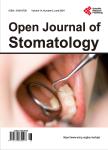The transcrestal hydrodynamic ultrasonic cavitational sinuslift: Results of a 2-year prospective multicentre study on 404 patients, 446 sinuslift sites and 637 inserted implants
The transcrestal hydrodynamic ultrasonic cavitational sinuslift: Results of a 2-year prospective multicentre study on 404 patients, 446 sinuslift sites and 637 inserted implants作者机构:Center for Facial Aesthetics Vienna Vienna Austria Implantology Clinic Kaiserswerth Dusseldorf Germany Implantology Clinic Oberkassel Dusseldorf Germany Office for General Dentistry and Implantology Graz Austria Office for General Dentistry and Implantology Mattersburg Austria
出 版 物:《Open Journal of Stomatology》 (口腔学期刊(英文))
年 卷 期:2013年第3卷第9期
页 面:471-485页
学科分类:1002[医学-临床医学] 100214[医学-肿瘤学] 10[医学]
主 题:Transcrestal Hydrodynamic Sinuslift Bone Augmentation Implants Ultrasound Surgery Maxillary Sinus
摘 要:Introduction: In 2006 an ultrasound-surgery-based method to hydrodynamically detach the sinus-membrane utilizing the ultrasonic cavitation effect—the tHUCSL—was developed and a surgical protocol established. The aim of the study was to determine the indication-range and success-rate of this novelty procedure. Materials & Methods: Between 2007 and 2009, 404 patients were treated by 6 oral surgeons of different experience-levels with the tHUCSL in 446 sinussites. 637 implants were inserted and then prosthodontically treated and observed and documented until December 2011. The subantral space was augmented via the 3 mm transcrestal approach with an augmentation volume of 1.9 ccm (+/? 0.988 ccm) and an augmentation height of 10.7 mm (+/? 2.85 mm). Results: Within the survey-period 15 (2.35%) of the 637 inserted implants were lost, mostly before implant loading due to postsurgical infection and nonosseointegration in the augmentation site. 1 implant was lost after implant loading and prosthetic treatment within 1 year after loading. The overall success rate with functional implants in site is 97.65% evenly distributed among the participating surgeons. 86% of the patients were observed with no postsurgical swelling and 87% no postsurgical pain. Discussion: The results suggest the tHUCSL to be a safe minimal-invasive alternative to traditional lateral approach and transcrestal osteotome sinuslift-procedures applicable to all anatomical situations.



